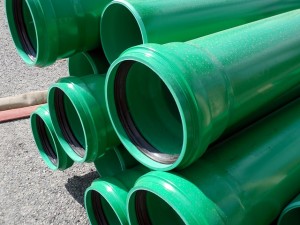How to Repair a Broken Sewer Pipe
This entry was posted on Aug 27, 2015 by Richard FoulkesIt may not be the most pleasant task around, but fixing a broken sewer pipe yourself is relatively easy to do yourself and can save you a small fortune. Unfortunately, broken sewer pipes can go unnoticed for a long time which can create much larger problems. Once you notice that a pipe is broken you should take action immediately to prevent any potential health hazards, here’s what you need to do:
Find the Broken Sewer Pipe
As most sewer pipes are found underground it can sometimes be difficult to locate the problem – look for areas where water is seeping out of the ground or alternatively you may have to follow your nose. This isn’t the most pleasant task and it may require a fair bit of excavation in order to find the source itself.
 When digging to find the pipe, it is much better to use manual tools rather than machines as this reduces the chances of you causing even more damage. Depending on the situation, this can be a rather unpleasant and arduous task - it is also important to make sure you’re wearing the correct safety gear such as eye protection, gloves and face mask.
When digging to find the pipe, it is much better to use manual tools rather than machines as this reduces the chances of you causing even more damage. Depending on the situation, this can be a rather unpleasant and arduous task - it is also important to make sure you’re wearing the correct safety gear such as eye protection, gloves and face mask.
Clean the Sewer
Now for the messy part, cleaning up the mess caused by the broken pipe. Sometimes simply cleaning and unblocking the pipe is all it takes to fix the problem, regardless of whether this is the case you will need to clean the area to make it safe.
The best way of cleaning the pipe is to use a plumber’s snake, which works its way through the pipe to remove debris. However, some debris will not be able to be moved using this method if it is stuck fast or is particularly awkward. In this situation you may need to manually remove it using your hands – make sure that you’re using rubber gloves for this process – or with a high pressure water system.
How to Re0place Sewer Line
Once you’ve found and cleaned the broken section of pipe you will want to remove the damaged sections. Depending on the extent of the damage and the material of the pipe, you may be able to salvage PVC or metal pipes with epoxy or other pipe sealants while concrete pipes will require mortar.
If the damage is extensive then you may require a professional to relay the sewer line, although if it is localised then you could simply replace sections of the pipe. There are a couple of different ways that this can be done:
- Replacing the section – simply take the old pipes out and put new pipes in their place, a like-for-like switch that gives you working sewer pipes with minimum disruption.
- Pipe relining – this process gives you need pipes from the inside out by applying lining material to your existing sewer system, effectively acting as a sleeve that eliminates any cracks or holes in the pipe.
- Bursting – an expensive and costly solution for extremely damaged systems, this technique breaks apart your old sewer pipes while installing a new pipe in the cavity the old pipes left.
Which method you will require will depend on the location, the damage and the condition of the rest of the underground drainage pipe. If you’re unsure about what you should do then it is a good idea to ask a professional for their opinion.


